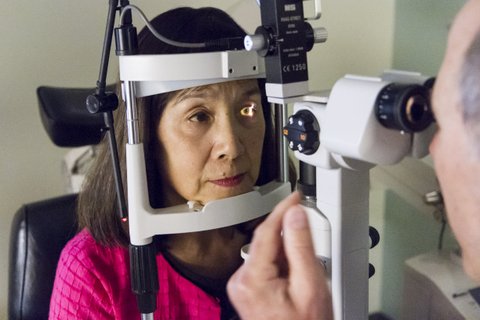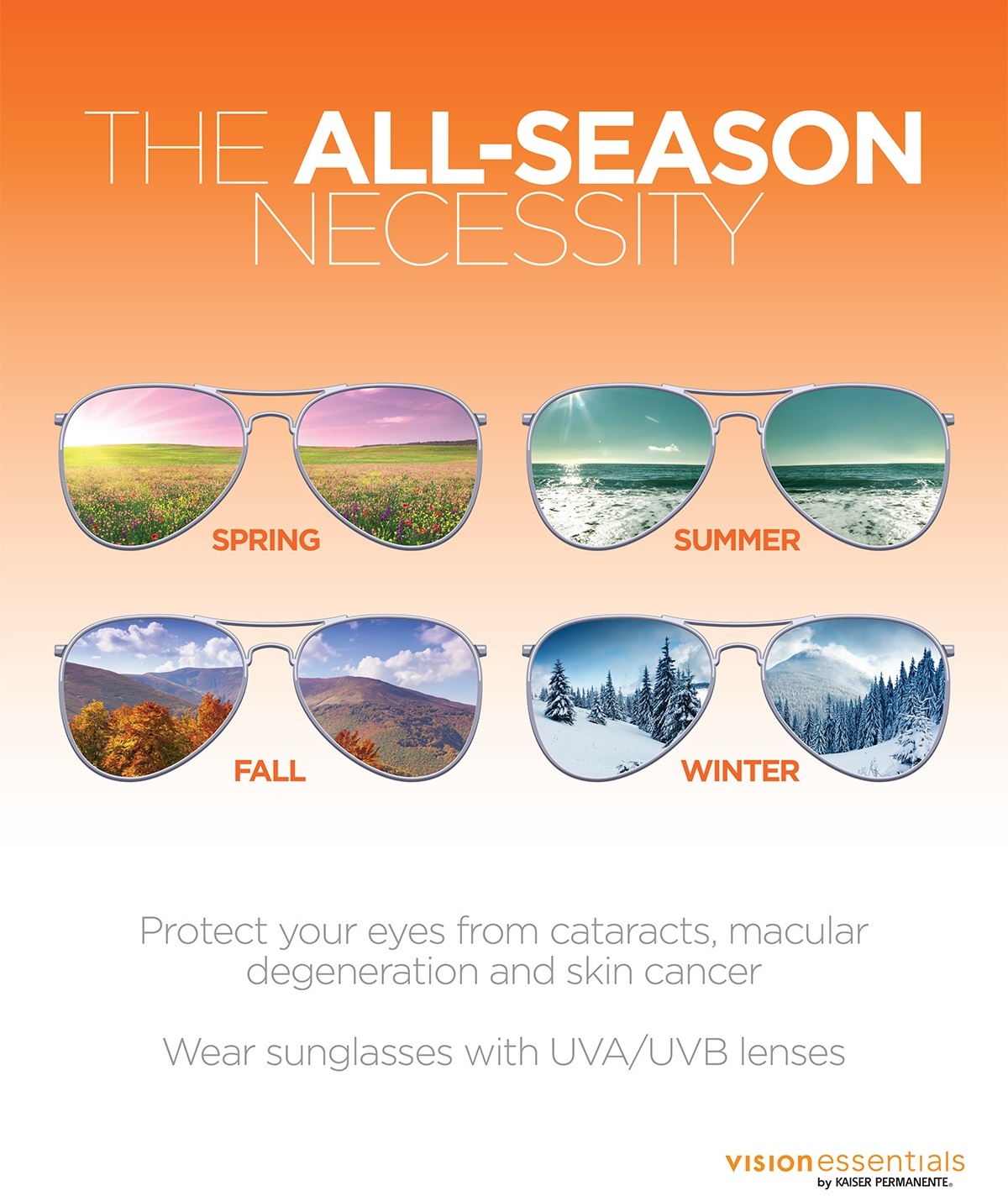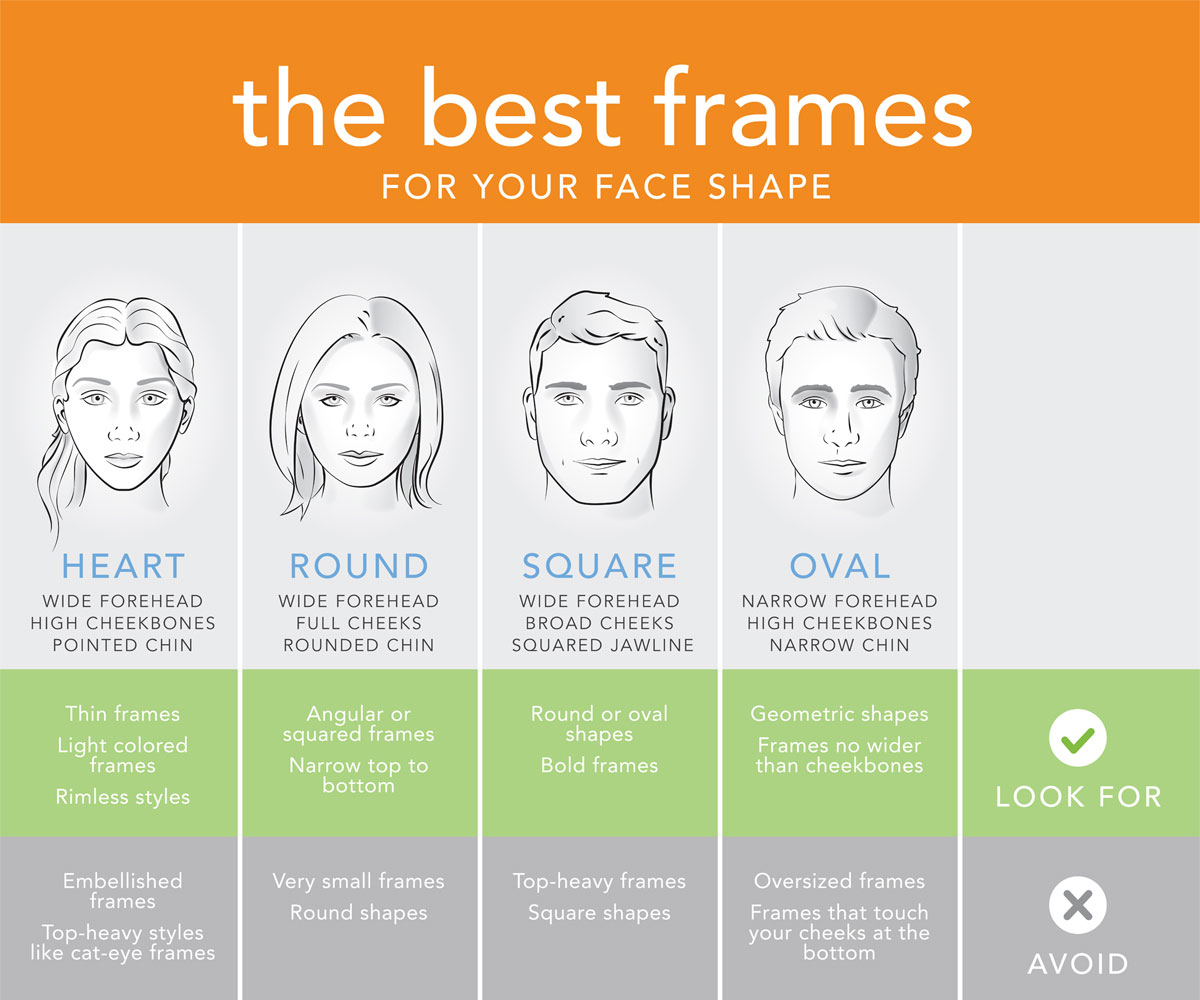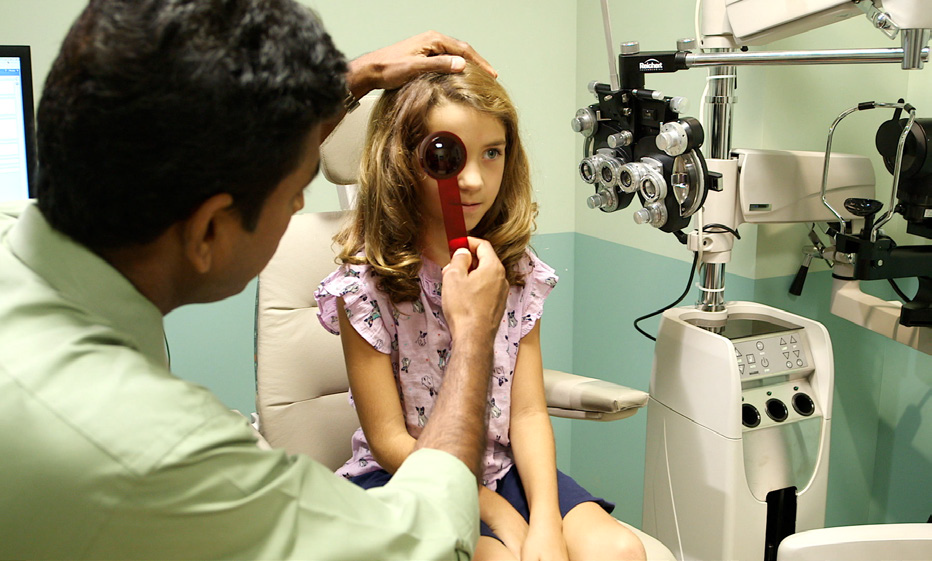Eye Care Information
Your vision is one of your most important senses. Your Kaiser Permanente eye care professionals are dedicated to helping you keep your eyes healthy and your vision sharp. The articles below offer information on what to expect at an eye exam, how to select a frame, choosing sunglasses to suit your face and lifestyle, understanding of your lens choices, and helpful tips on contact lens wear.
Click below to learn more.
EYE HEALTH

First time to the optometrist or are you a regular patient? Being prepared and knowing what to expect are the keys to receiving quality services. Try to arrive 15 to 20 minutes early to allow time to check in and fill out any new forms that may be required.
At the time of your eye exam, you should be ready to discuss with your doctor: your visual needs at work; recreational activities and hobbies, including sports participation; home and garden chores; and any problems you are having with your vision. The doctor will use this information to recommend the most appropriate lenses for your lifestyle needs.
Let your doctor know if you are interested in contact lenses . Fitting contact lenses may involve coming back for a special fitting appointment at another time. If you already wear contact lenses, wear your contacts to your appointment. Bring your eyeglasses and any information about your current contact lenses that you have, such as boxes, vials and your last prescription.
The optometrist will perform a series of tests and examinations to see if the internal and external structures of your eyes are healthy. Conditions that can be detected during your eye exam include cataracts*, glaucoma*, and macular degeneration*.
To determine what prescription power you will need for each eye, your doctor will then have you look through a refractor. The optometrist will switch back and forth, placing different lenses in front of your eyes, asking which is clearer, one or two.
Sometimes it may seem there is no difference at all or only a very slight difference. With so many choices, you may feel unsure of your answers. This is perfectly normal. Here's an example of why this system works so well.
While your visual system may have difficulty determining the exact height of a person standing alone, if there are two people standing side by side, it becomes very easy to determine which person is taller. In the same way, you may find it easier to determine which vision choice is better by comparing two different choices than if your eyes had to look at each choice, one at a time.
After your prescription has been determined, you will receive a written prescription for your lenses. You will then be directed to our Optical Services Department to choose your frames and lenses.

Dilated eyes allow the optometrist to look at the peripheral area of the inside of the eye.
Not every patient needs to have a dilated examination. When dilation is necessary this is what you can expect.
Drops will be placed in each eye to enlarge the pupil (the black portion in the center of the eye's iris). This allows the optometrist to look at the inside of the eye. You will be asked to wait for your eyes to respond to the drops and the pupils to fully dilate. Then your eyes will be examined for signs of any health problems.
Vision Care Terms:
- CATARACT - is a clouding of part or all of the lens inside the eye, resulting in blurred or distorted vision.
- GLAUCOMA - is a disease in which the internal pressure in the eye builds up because of problems with the out-flow or drainage of fluid within the eye, damaging the optic nerve and causing partial or total loss of sight.
- MACULAR DEGENERATION - is the loss of central vision as a result of changes, often related to aging, in the macula - that portion of the retina responsible for sharp, clear central vision.
Children are screened from birth for eye disease and vision problems by their pediatricians during their regular periodic visits. Parents are an important part of this process and need to let the pediatrician know if they notice anything unusual about their child's eyes or vision. The most common eye problems of childhood are strabismus and amblyopia.
Strabismus refers to a crossed or turned eye. This condition tends to run in families, but can also occur spontaneously. Strabismus may require eyeglasses, or much less commonly, surgery.
Pseudostrabismus refers to the very common situation where a child appears to have eyes that turn in due to a wide band of skin at the immature bridge of the nose. As the nose grows out, the appearance corrects itself.
Amblyopia or "lazy eye" refers to an eye that doesn't develop vision equal to the other eye because it's deprived of visual input. This deprivation may be due to the eye being turned in or out, a droopy lid blocking light from entering the eye, or from a very different eyeglass lens prescription compared to the other eye. Treatment of amblyopia may require "patching," eyedrops, or eyeglasses
Children, even infants, may require eyeglasses to correct vision problems. Fitting children for eyeglasses is challenging and requires a wide array of suitable frames and an experienced staff. Our highly-trained Kaiser Permanente Optical staff loves to assist these special patients.

Los anteojos de sol pueden ser un accesorio muy de moda, pero su función más importante es protegerle los ojos de los perjudiciales rayos ultravioleta (UV) del sol, aún en día nublados. Además de que el fuerte resplandor del agua, la nieve y hasta de los edificios puede impactarle la vista. Un buen par de anteojos de sol pueden protegerle los ojos y mantenerlos sanos. Y con una amplia variedad de estilos a su disposición, ¡usted puede escoger un par que se adapte a su apariencia personal!
Peligros del sol
- La luz ultravioleta (UV) puede ser perjudicial para los ojos. Se considera que la luz UV es una de las principales causas de las cataratas, los cánceres de párpado y ciertos tipos adicionales de cáncer de la piel. Se cree que juegan un papel importante en la degeneración macular, una de las principales causas de la pérdida de la vista en los Estados Unidos en la gente mayor de 50 años de edad. Por eso ofrecemos protección UV en todas las lentes que vendemos* sin costo adicional.
- El deslumbramiento se intensifica cuando la luz rebota de superficies naturales como la nieve, la arena y el agua, además de superficies artificiales como las carreteras, aceras, cristales, automóviles y concreto. Este resplandor fuerte puede obstruirle la vista y causarle fatiga en los ojos y dolores de cabeza.
Soluciones para el sol
- Las LENTES POLARIZADOS son las lentes de anteojos de sol más cómodas para eliminar el resplandor y reducir la fatiga de los ojos en el sol.
- Las LENTES CON COLORACIÓN ACTIVA son lentes especializadas que se mantienen trasparentes en los interiores y se oscurecen en los exteriores cuando hay luz UV.
- Las LENTES CON COLORACIÓN se ofrecen en toda una gama de colores del arco iris, desde claros hasta muy oscuros. Los tintes pueden ser de un color sólido en toda la lente o gradiente.
- Las LENTES DE SOL CHEMISTRIE MAGNETIC se fabrican a la medida para que se adapten a sus anteojos. Se sujetan magnéticamente y se ofrecen en una gama de colores y tonos desde claros hasta oscuros.
*con excepción de los lentes de cristal
Frames and Lenses

At Vision Essentals we have something in every price range and something for every style. Our Exoert Opticians will help you with your fit, style and vison needs.
_0496.jpg)
Your eyewear is both a medical necessity and a fashion accessory. You will want to allow sufficient time after your eye exam to select the right frame for your face and personality.
After your eye exam, you will be directed to our Optical Center to select your frames and lenses. The receptionist will check your eyewear benefits and invite you to look at the display of frames while you wait for the optician to assist you. Our Optical Centers carry name-brand frames in hundred of styles. Whether you are looking for the lightweight strength of metal frames or the bold color of plastics you’ll have the latest styles from Ray-Ban, Coach, Calvin Klein and other famous designers to choose from.

Sus anteojos son una necesidad médica y un accesorio de moda. Va querer tener suficiente tiempo después de su examen de la vista para seleccionar el armazón apropiado para su cara y personalidad. Éstas son algunas de sus opciones para la selección de sus nuevos armazones: materiales - plástico, metal, titanio; forma - redonda, ovalada, rectangular, en forma de ojo de gato; color - plateado, dorado, bronceado en los metales o cualquier de los colores del arco iris en plástico.
Gracias a que hay una amplia variedad de estilos y productos nuevos de dónde escoger, usted puede cambiar su apariencia escogiendo simplemente el mejor estilo de armazón para su cara.
Después de su examen de la vista se le referirá a nuestro Centro de Óptica para que escoja sus armazones y lentes. La recepcionista revisará sus beneficios para artículos para la vista y le invitará a que vea los armazones en exhibición mientras espera que le atienda un oculista.
Seleccionar armazones que complementen su cara y tono de piel es importante para escoger sus artículos para la vista. Cuando selecciona una forma específica de un artículo para la vista realmente puede realzar sus mejores características faciales y estar importancia a las menos atractivas.
La conviene escoger diferentes tipos de armazón porque algunas de sus selecciones quizá no sean apropiadas para su graduación. Es posible que necesite tener un segundo par de anteojos para usar en el sol o un par de anteojos para uso diario y otro para actividades deportivas.
The lenses are the most important part of your eyewear. After all, without the lenses, who needs a frame? Your finished lenses will be made of three components, lens materials, lens design and lens treatments. By understanding you choices you can make the most appropriate decision for you new eyewear.
Lens Designs: Most of the time, your prescription will determine the lens design - single vision, bifocal, trifocal. You can also opt for progressive addition lenses instead of bifocals. These lenses provide distance, reading and intermediate vision without a bifocal line. Photochromatic lenses offer comfort to light-sensitive eyes. These lenses adjust from light to dark depending on the intensity of sunlight.
Lens Materials: Choices include glass, plastic and high-index. Plastic and glass lenses are similar in optical quality and both must meet minimum federal impact-resistant standards. A special material called polycarbonate is the most impact-resistant lens available. High-index lenses come in both glass and plastic, and include polycarbonate. These lenses are lighter and thinner at the edges than regular glass or plastic.
Lens Treatments: Scratch-resistant coatings are a good choice for all plastic and polycarbonate lenses. Kaiser Permanente includes a scratch-resistant coating on all lenses. An ultra violet (UV) coating is recommended on all plastic lenses. Polycarbonate and high-index lenses already provide UV protection. Glare-free coatings reduce reflections on the lenses helping you to see more clearly and improve night vision.
Contact Lenses

Re-Order Contacts Online
Ordering contacts online is easy and convenient
You can easily re-order your contact lenses online through this vision essentials site.
Your new lenses are just a few clicks away.
There are a number of reasons why some people prefer contact lenses over standard eyewear: a glasses-free look - contacts provide vision correction without placing a pair of glasses on your face; hassle free - once in your eyes, contacts require less maintenance throughout the day than glasses and they are more versatile - contacts may make it easier to participate in a number of outdoor activities and sports such as jogging, golf, tennis or basketball: fun - colored contacts are a fun way to enhance your natural eye color or change the color of your eyes all together. Contact lenses might provide improved vision for people with high-strength prescriptions or astigmatism.
Once you've decided you want to try contact lenses, you will need to schedule a contact lens appointment. Your optometrist will recommend contact lenses for your eyes based on a complete vision examination and a review of your visual needs at work and at play. Being able to wear contact lenses successfully depends upon your motivation and commitment to take proper care of both the lenses and your eyes.
GOOD CANDIDATES FOR CONTACTS will have: realistic expectations about contact lens wear; a desire to wear them; the ability to follow directions regarding care and cleaning; a prescription that lends itself to contact lenses; and no additional eye health problems.
At the contact lens appointment, an evaluation will be made to determine the appropriate starter lenses. Contact lenses are fit to each individual person and follow up appointments are needed to ensure appropriateness. At your final appointment with your optometrist, you will be given your contact lens prescription.
Current contact lens wearers should bring a copy of their most recent, signed, contact lens prescription. If you have not had a recent eye exam (within 12 to 24 months), or do not have a copy of your contact lens prescription, your doctor will require a new eye examination to evaluate the health of your eyes and to determine the type of contact lenses best suited for you.
Contact lenses are available in a variety of materials and wearing schedules. Since most people can wear more than one type of lens, it's important to know what the choices are and the advantages and disadvantages to each type.
SOFT LENSES - Soft contact lenses are comfortable to wear almost from the start. Replacement schedules can vary from once a year, quarterly, monthly or weekly. For the optimum in convenience, daily disposable soft contacts are discarded everyday, completely eliminating the need to clean and disinfect. Soft lenses are recommended for sports because they fit closer to the eye and are difficult to dislodge. They are available in daily wear and extended wear.
COLOR CONTACTS FOR A CHANGE Enhance your eye color or even change it completely with colored soft contact lenses. They are fun, exciting, and come in a variety of colors for both light and dark eyes. Ask your eyecare professional about colored contacts.
RIGID GAS PERMEABLE (RGP) LENSES - RGP lenses are made of slightly flexible plastics that offer sharp vision and correct most vision problems. They are more durable than soft lenses and easier to care for but require a longer adaptation period and consistent wear to maintain adaptation.
Regardless of the type of contact lenses you wear, a periodic eye exam is recommended.
How to put on and take off contact lenses
Left your contacts in too long? Not a good idea

WHAT IS MYOPIA
Myopia, also known as nearsightness, is the vision condition that occurs when the eye is too long so that light entering doesn’t focus correctly and creates blurry vision in the distance. Cases of myopia have increased dramatically worldwide and is now the leading cause of visual impairment. Today, about 42% of the US population has myopia compared to just 25% in the 1970s. Myopia typically develops between 6 and 18 years of age.
LEARN MORE ABOUT MANAGING MYOPIA
